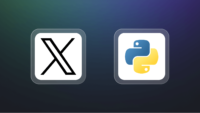Understanding the Fundamentals of Data Analysis for Beginners
The term “data” has its origins in the Latin language, where it is the plural form of the word “datum” meaning “something given”. According to Wikipedia, data analysis is the process of systematically inspecting, cleansing, transforming, and modeling data with the primary objective of uncovering useful information, deriving meaningful insights, and supporting effective decision-making. In today’s digital age, the sheer volume of data being generated, captured, copied, and consumed worldwide on a daily basis is staggering and constantly on the rise.
Mastering the fundamentals is crucial if one aspires to pursue a career in the fields of data science or data analysis,as the ability to analyze and extract meaningful insights from it will become an increasingly valuable and sought-after skill in the years to come.
In this comprehensive article, we will delve into the core aspects of data analysis, equipping you with a solid foundation to navigate this exciting and rapidly evolving domain.
Data Analysis involves several key steps.
Defining Objectives – The first step is to define the specific objectives or problems that need to be addressed. This could involve questions such as “Why are we losing customers?” or “What are the reasons behind the low sales figures in January?”
Data Cleaning – Data cleaning which is also known as data scrubbing or data wrangling, is the process of finding and removing errors, inconsistencies, duplications, and missing entries from data to increase its consistency and quality. This critical step helps ensure the accuracy and reliability of the dataset.
Data Exploration – This involves using visualization and statistical techniques to understand the dataset’s size, quantity, and accuracy, helping analysts grasp its nature, distribution, and potential insights.
Analyzing the Data – After cleaning and exploring the data, the next step is to analyze it using statistical and logical methods which may include describing, summarizing, and assessing the data to uncover meaningful insights and trends. Analysts may employ a variety of techniques, such as regression analysis, clustering, and hypothesis testing, to identify significant relationships, make predictions, and draw conclusions from the data.
Communicate Results – The final step is to effectively communicate the findings to stakeholders, such as the board of directors or company executives. This involves creating a polished and engaging presentation, often in the form of a PowerPoint slide deck or interactive data visualization. The goal is to clearly and compellingly present the key insights, and recommendations derived from the data analysis.
Types of Data Analysis
Descriptive Analysis
Descriptive analysis involves summarizing and explaining the key characteristics of the data using basic statistical measures. This is crucial as it helps the analyst gain a deeper understanding of the data and its properties, without making any inferences or predictions about future outcomes. For instance, when analyzing test scores, the descriptive analysis would typically include calculating the average score, the highest and lowest scores, as well as the measure of how much the scores vary(standard deviation). This information provides a clear snapshot of the performance of the test-takers, allowing the analyst to understand and explain the data in a simple, straightforward manner. It helps the analyst identify patterns, trends, and potential outliers within the dataset, which can then be explored in greater depth through inferential analysis.
Inferential Analysis
Inferential analysis, on the other hand, involves using a smaller sample of data to draw conclusions about a larger population. This is useful when it isn’t convenient to collect the data of millions. For example, a psychological study with 500 participants discovered that 7-9 hours of sleep enhanced attention and well-being, whereas too little or too much sleep decreased attention and energy. Although this study was conducted with 500 people which is a tiny portion compared to the 8 billion people worldwide, the results are used to infer broader trends that might be applicable to the general population.
Diagnostic Analysis
Diagnostic Analysis delves into the underlying reasons behind past outcomes or anomalies. By taking an in-depth look at various data sources, this approach aims to uncover subtle patterns and insights that can shed light on the root causes of a particular situation.
For instance, consider a retail company that has experienced a significant drop in sales for one of its product lines. Through a thorough diagnostic analysis, the company can carefully examine sales records, customer feedback, marketing efforts, and inventory data to gain a deeper understanding of the factors contributing to this decline. This examination might reveal that the drop in sales is primarily due to a recent price increase as well as a change in the company’s marketing strategy. With this knowledge, the company can make informed decisions to adjust pricing, refine marketing tactics which will ultimately enhance sales and improve the product line’s performance.
Predictive Analysis
Predictive Analysis leverages historical and current data to forecast future trends, patterns, or behaviors.
Consider the case of an e-commerce company that wants to anticipate sales during the upcoming holiday season. By analyzing its historical sales data, customer behavior, and market trends, the company can apply predictive analysis to forecast a 20% increase in sales during this period. This forecast can then serve as a valuable guide, helping the company to proactively adjust its inventory, plan targeted promotions, and optimize staffing to meet the expected surge in demand.
Prescriptive Analysis
Prescriptive Analysis not only identifies patterns and trends but also recommending specific actions or solutions to optimize outcomes.
One common example of prescriptive analysis can be found in our daily lives, where it influences the tailored content we interact with on social media platforms. These platforms employ sophisticated algorithms that analyze our browsing history, interests, and behaviors to prescribe personalized content recommendations. By doing so, they aim to optimize our engagement and maximize the value we derive from the platform, ultimately benefiting both the user and the platform provider.
Prevalent Tools Used by Data Analysts
Microsoft Excel and Google Sheets are versatile spreadsheet applications that allow data analysts to organize, calculate data in a user-friendly environment. These tools are often the starting point for many data analysts.
Microsoft Power BI and Tableau, on the other hand, are more specialized data visualization and business intelligence tools. These platforms enable data analysts to create interactive dashboards, reports, and visualizations that effectively communicate their findings to stakeholders.
SQL (Structured Query Language) is a programming language used for managing and manipulating relational databases. It allows data analysts to extract, filter, and aggregate data from complex database systems, making it a crucial tool for working with large and structured data sets.
Python and R are powerful programming languages that offer a wide range of libraries and packages for data analysis, machine learning, and statistical modeling.
Challenges Faced by Data Analysts
Data analysts often encounter various challenges in their work, including:
- Incomplete data: Incomplete data or missing values make it difficult for data analysts to draw accurate conclusions or generate reliable insights.
- Variability in data formats: Data can be stored and presented in a wide range of formats, such as spreadsheets, databases, or unstructured data sources. Navigating these different formats and ensuring compatibility can be a significant challenge for data analysts.
- Communicating insights effectively: Translating data insights into actionable recommendations and presenting them in a way that is meaningful and understandable to stakeholders can be a significant challenge for data analysts, who must possess strong communication and storytelling skills.
Waiting for the right time to start that your data analytics journey?
The article above gives a clear view of the data analytics field. What are you still waiting for—a sign from the heavens?. Join our bootcamp to get in-depth teaching and training on how to use the above mentioned tools plus a lifetime of mentorship from us. See you soon!







